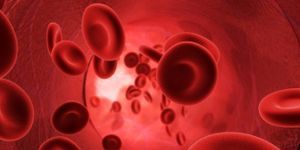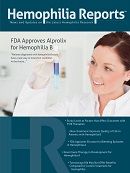Study Looks at Factors that Affect Outcomes with FVIII Therapies
Patients on FVIII therapies may develop antibodies that diminish treatment efficacy, may not be able to handle frequent dosing schedules, and may not be able to afford the cost of treatment.

Patients on FVIII therapies may develop antibodies that diminish treatment efficacy, may not be able to handle frequent dosing schedules, and may not be able to afford the cost of treatment.
When it comes to the treatment of bleeding disorders like hemophilia A and hemophilia B, there are many options that can help patients live normal lives with as few disruptions as possible.
A recent study showed that, especially for hemophilia A, there are several treatment options, including Factor VIII (FVIII) therapies but each is also associated with several concerns. Among the issues cited were immunogenicity of available FVIII concentrates, the role of longer-acting FVIII products, prophylactic use of FVIII in children and adults with severe hemophilia A, and the affordability and availability of FVIII products.
“Improving patient outcomes by increasing the use of FVIII prophylaxis, preventing or eliminating FVIII inhibitors, and expanding access to FVIII concentrates in developing countries are the major challenges confronting clinicians who care for patients with hemophilia A,” the authors wrote.
The use of FVIII replacement therapy is not a new concept as it was introduced in its earliest stages in the 1960’s and 70’s, according to the study. The first product was then introduced in 1992 and in the 20 years since it has become available in plasma-derived and rFVIII forms.
Study results reported by the author showed that 45% of all severe hemophilia A cases “are caused by an inversion created by homologous recombination of intron 22 and related sequences outside the F8 gene.” The mutation, they said, is caused by “flipping of the tip of the X chromosome, which is facilitated in male meiosis but inhibited by pairing of the two X chromosomes in female meiosis."
When patients do receive FVIII replacement therapy one of the challenges that confronts doctors is that 30% of patients with the most severe form of hemophilia A will develop antibodies that will work against the therapy. Factors that can contribute to this issue include race, family history, and some immune response genes, according to the authors.
The “intensity” of the replacement can also be an issue for inhibitors. “Inhibitor development is the most serious complication associated with the treatment of hemophilia A because bleeding episodes no longer respond to standard FVIII replacement,” the authors noted.
While bypassing agents can help some, the authors said they do not fully make up for the issues of the antibodies. “Their hemostatic efficacy does not reach the overall level of success obtained with FVIII replacement in hemophilia patients without inhibitors, and no validated strategies are available to monitor dosing.”
This, can lead to an “increased risk for severe hemorrhage, disability and diminished health-related quality of life.”
Research has also looked at the effect of longer-acting products on the treatment of hemophilia A. Looking at half-life extension strategies, the authors noted a series of studies that have been done in regards to FVIII. “These include: reducing interaction with receptors responsible for clearing FVIII from plasma; rescuing FVIII endocytosed by reticuloendothelial cells from intracellular degradation pathways through interaction with neonatal fragment crystallizable receptor; and enhancing the interaction of FVIII with VWF.”
One of the main concerns when it comes to the treatment of hemophilia A is the costs associated with the clotting factor concentrate (CFC), which the authors stated accounts for over 80% of patient costs. “In the current era of health care austerity, cost is a primary reason why FVIII prophylaxis has not been adopted as standard treatment in all Western countries, and why the availability of FVIII concentrate even for on-demand treatment remains limited in the developing world.”
Because of these factors the authors suggest, “FVIII concentrate must be used in the most efficient manner by balancing consumption and efficacy.” They add, “This balance may differ among patients and vary according to stage of life.”
One suggestion for cutting costs is switching from what the authors referred to as a “full-dose regimen,” to a “reduced dose and/ or frequency treatment plan.” That can include the Intermediate-dose prophylaxis, also known as the Dutch regimen or the tailored-dose prophylaxis which is known as the Canadian regimen.
The Dutch method involves infusing FVIII 15-25 IU/kg 2 or 3 times a week after a joint bleeding event while the Canadian version includes using prophylaxis once a week at a dose of 50 IU/kg. “In both regimens, the dose and/or dosing frequency is escalated when breakthrough bleeding occurs,” the authors note.
The team involved in the survey included Louis Aledort of the Mount Sinai School of Medicine in New York, Rolf Ljung of the Lund University Malmo Center for Thrombosis and Haemostatsis-Skane University Hospital in Sweden, Kenneth Mann of the University of Vermont College of Medicine, and Steven Pipe of the Department of Pediatrics and Pathology at the University of Michigan Medical Center.
